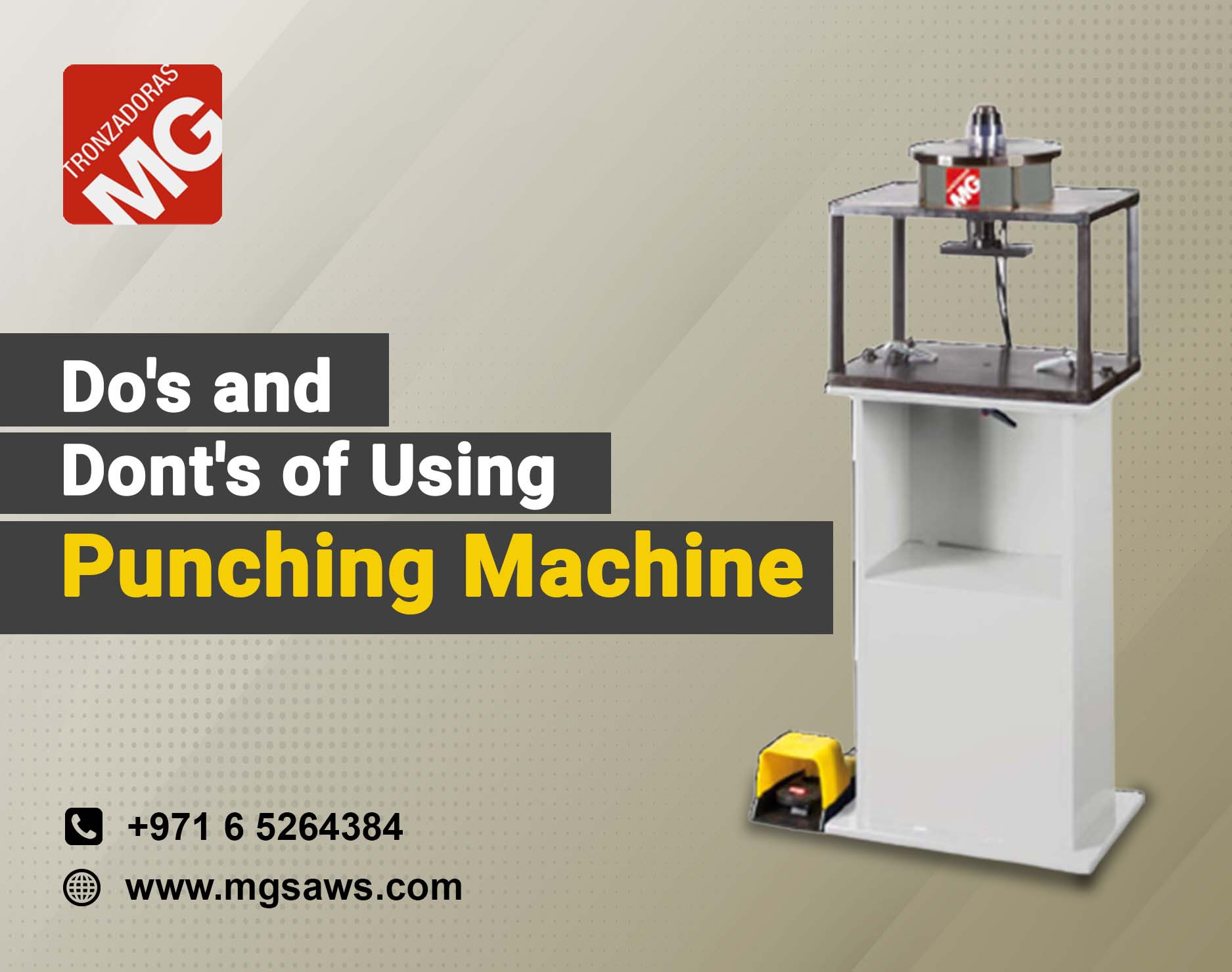Mastering the Art of Precision: Do's and Don'ts of Using Punching Machines in Industries
Follow Us

Introduction:
Punching machines have become indispensable tools in various industries, revolutionizing the way materials are processed. Whether it's metal fabrication, packaging, or automotive manufacturing, the efficient use of punching machines, including pneumatic punching machines, can significantly impact productivity and output quality. In this comprehensive guide, we'll delve into the do's and don'ts of using punching machines in industrial settings, shedding light on best practices and safety measures.
The Do's:
Regular Maintenance:
Consistent and scheduled maintenance involves not only routine checks but also proactive measures such as cleaning, adjusting, and ensuring proper alignment. Regular inspections contribute to the prevention of potential issues and ensure the punching machine's sustained efficiency.
Operator Training:
Comprehensive training programs should encompass not only the basic operation of the machine but also cover troubleshooting, emergency procedures, and understanding the importance of adhering to safety protocols. Well-trained operators contribute significantly to a safe and productive work environment.
Material Compatibility:
Beyond simply verifying compatibility, understanding the nuances of different materials is crucial. This involves recognizing the optimal settings and adjustments needed for various materials, ensuring precision in the punching process.
Tooling Inspection:
In-depth tooling inspection includes evaluating not just visible wear but also checking for any subtle deformities that may impact performance. Ensure the normal functioning of the machine tool by checking the transmission, connection, lubrication, and other components, as well as the integrity of protective safety devices. Verify the firmness of mold screws, ensuring they remain securely in place.
Before initiating work, allow the machine tool to idle for 2-3 minutes. During this time, assess the flexibility of control devices, including the foot brake. Proceed with the operation only after confirming that these components are in normal working condition; refrain from operating the machine if any abnormalities are detected.
Regular maintenance should include a systematic approach to tooling replacement based on wear patterns and usage.
Utilize Safety Features:
Safety features should be actively integrated into daily operations.
When engaging in punch press machining or working with short and small workpieces, employ specialized tools and avoid direct manual feeding or part handling.
For punch press machining involving long-body parts, implement safety measures such as setting up supporting racks to prevent digging and minimize the risk of injury.
Upon completion of work, bring the machine to a timely stop, cut off the power supply, and perform a thorough cleaning of the machine tool and its surroundings. This routine maintenance ensures a safe and efficient working environment.
Regular training sessions can reinforce the importance of these features, emphasizing their role in preventing accidents and maintaining a secure work environment.
Optimize Programming:
Optimization of programming extends beyond basic functionality. It involves staying updated on the latest programming techniques and tools to enhance not only efficiency but also the adaptability of the punching machine to evolving production requirements.
The Don'ts:
Ignore Safety Procedures:
Ignoring safety procedures includes neglecting to conduct regular safety drills and failing to address near-miss incidents promptly. A proactive safety culture is crucial for preventing potential hazards and fostering a secure workplace.
Overload the Machine:
Overloading isn't just about exceeding weight limitations; it also involves understanding the strain on specific components during different operations. Regular monitoring and load assessments help prevent overburdening the machine.
Neglect Lubrication:
Neglecting lubrication is more than just missing routine checks. It includes failing to use the appropriate lubricants for different machine components and not adhering to a well-defined lubrication schedule based on usage intensity.
Operate Without Training:
Operating without training involves more than just initial training; it encompasses ongoing education about the latest machine updates, safety protocols, and best practices. Continuous learning ensures that operators remain proficient in their roles.
Avoid placing your hands within the working area of the sliding block when the punch press machine is in operation. To mitigate the risk of accidents resulting from fatigue, it is essential to ensure that an individual worker's working hours do not exceed 8 hours.
Use Damaged Tooling:
Beyond recognizing visible damage, operators should be trained to identify signs of impending tool failure. Ignoring the subtle indicators of tool wear can lead to unexpected breakdowns and compromise the overall efficiency of the punching machine.
Ignore Environmental Conditions:
Environmental considerations go beyond temperature and humidity. It involves understanding the impact of dust, debris, and other external factors on the machine's performance. Regular cleaning and maintenance routines should account for these environmental variables.
Conclusion:
Mastering the use of punching machines in industrial settings involves a combination of adherence to best practices, regular maintenance, and a commitment to safety. By following the outlined do's and don'ts, industries can maximize the efficiency, accuracy, and longevity of their punching machines, ensuring a seamless production process and superior output quality.
Tronzadoras MG specializes in the production of high-quality and precision punching machines across a diverse range. As the authorized dealer for Tronzadoras MG in the GCC, YES Machinery is dedicated to offering the complete lineup of punching machines at competitive prices, coupled with exceptional after-sales service to ensure customer satisfaction










